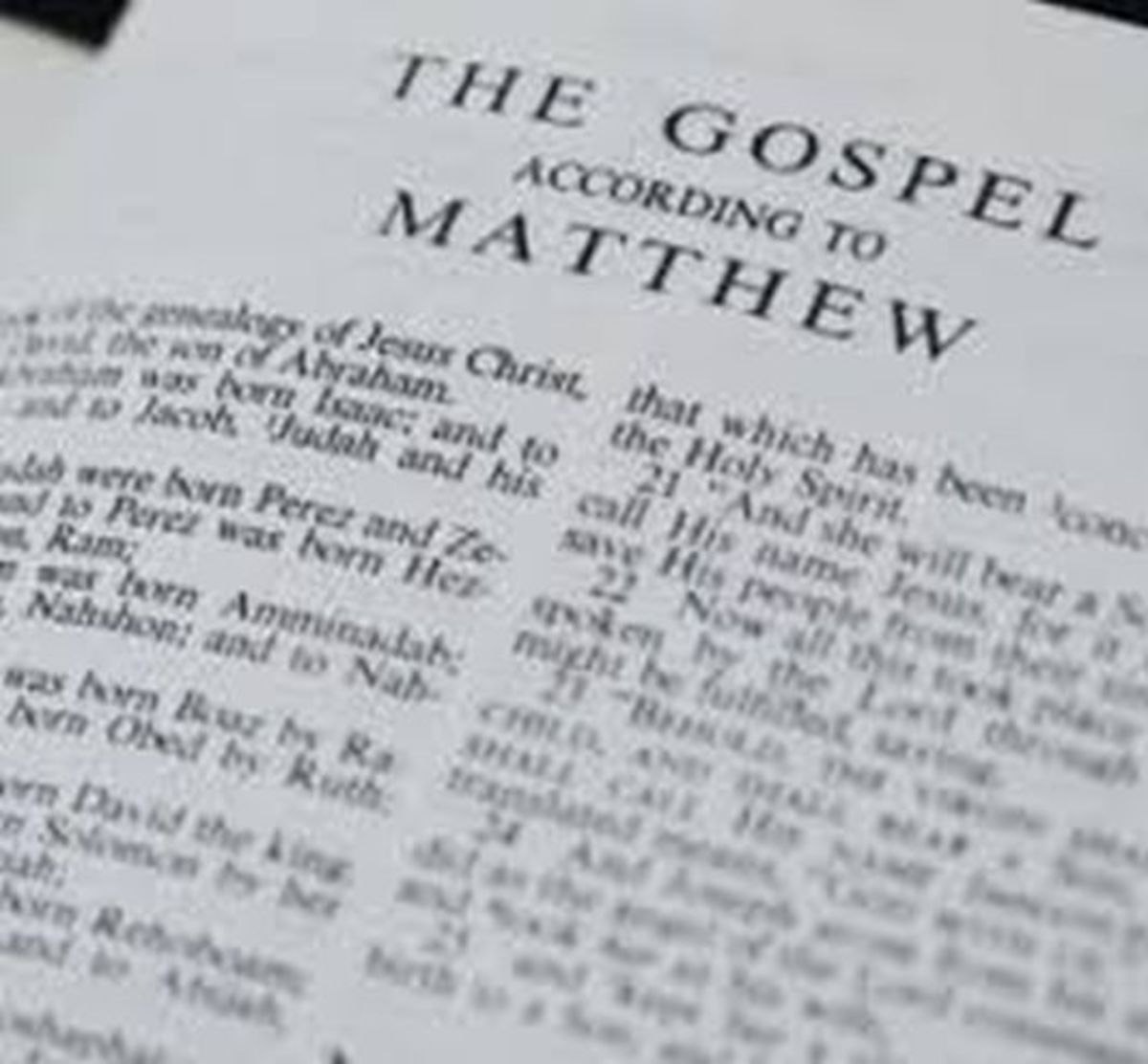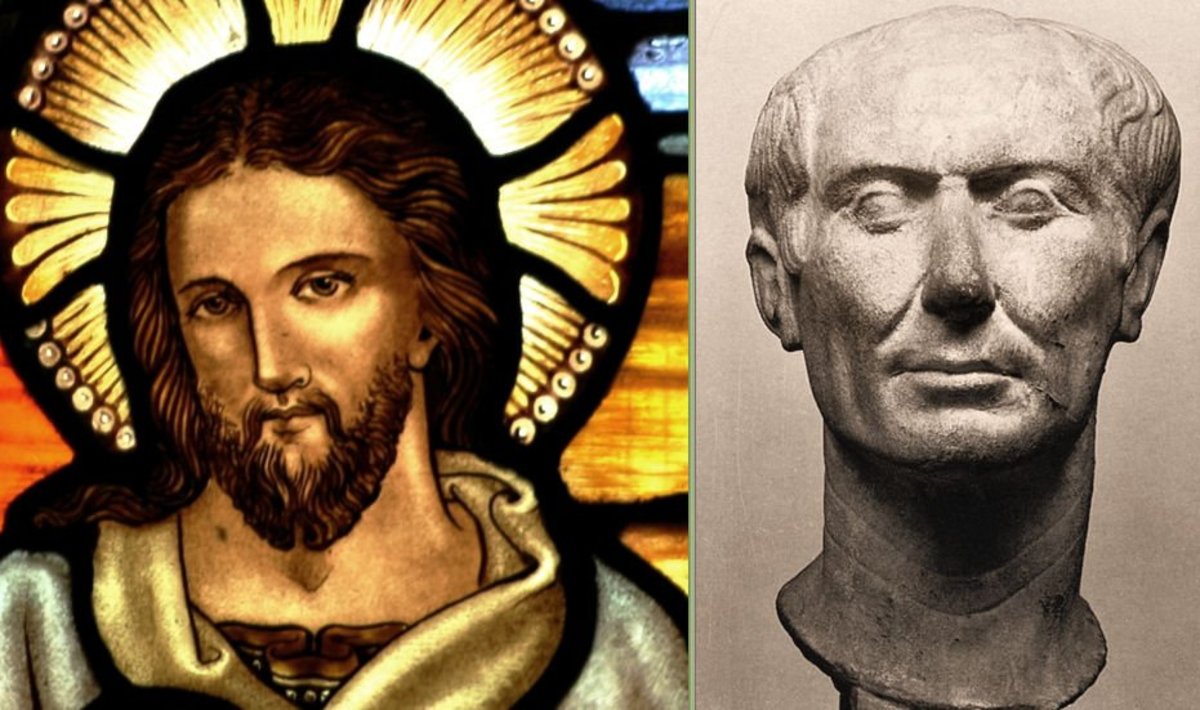New Testament Evidence
The Gospels & The New Testament – Examining the Evidence
The first thing we must realize when we seriously consider the gospel message is that if it is true, it has huge implications for one’s life. Secondly, we must accept that the gospel account is, in the very least, a set of ancient historical documents. That much is undeniable. With this in mind, we know that there is a profession that qualifies people to prove, or disprove the truthfulness of the Gospel record. Historians have criterion that they can apply to determine whether or not these documents are trustworthy and this essay is a summary of some of their findings.
The New Testament gospels are essentially attempts to write biographies of Jesus, but not in the modern sense because the gospels are not interested in His early years. However, when it comes to His adult life and His activities, these ‘are’ biographies. They are very clearly attempts by eyewitnesses to describe exactly what Jesus said and did.
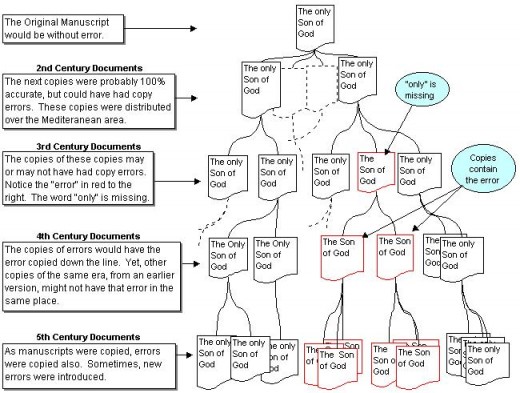
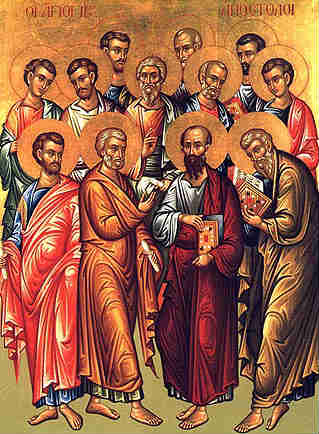
While the authors do not identify themselves in the text, from very early in the Christian era the Gospels have been attributed to Matthew, a disciple (or follower) of Jesus; Mark, a colleague of Peter, also a disciple; Luke, a historian and confident of the apostle Paul; and John, a disciple of Jesus.
Matthew: Apostle. A tax collector who was called by Jesus into the ministry
Mark: Evangelist. Converted to Christianity by Peter. Travelled with the apostle Paul
Luke: Evangelist. A physician and disciple of the apostle Paul
John: Apostle. Eyewitness to both the Transfiguration and the Crucifixion of Jesus
Both Matthew and John were among the twelve of Jesus’ closest followers and were constant companions throughout His ministry. They would have personally observed most of the events described in their respective gospels.
Mark and Luke were also contemporaries of Jesus, and wrote their biographies based on the information of many eyewitnesses.
Now would be a good time to take a moment to ponder the importance of ‘eyewitness’ testimony, especially in the light of the fact that many contemporary scholars have ascertained that the gospels are rooted in it.
Luke 1:1-4
“Many have undertaken to draw up an account of the things that have been fulfilled among us, just as they were handed down to us by those who from the first were eyewitnesses and servants of the word. Therefore, since I myself have carefully investigated everything from the beginning, it seemed good also to me to write an orderly account for you, most excellent Theophilus, so that you may know the certainty of the things you have been taught.” (NIV)
Luke’s gospel begins with an introduction in which he points out that he has carefully investigated the material he presents in the gospels, that is to say that he has checked with eyewitness accounts - those who were actually present. From reading the above quoted text, one can see that this is the work of a historian who has done his research.
Let us understand that the people of the New Testament era valued, much more than we do today, eyewitness testimony. This is why it was important to the early church fathers that the people who were alleged to have written the gospels actually wrote them and that they were eyewitnesses of the things they wrote. For example, the early church father Papius, as recorded by the church historian Eusebius, identifies Mark’s gospel as essentially the eyewitness account of Peter. But here’s the thing, Papius was a disciple of the apostle John, so we are only one generation removed from Jesus himself! That’s a pretty close testimony which strongly suggests that the gospels are based on eyewitness accounts.
The Timeline
7 BC – 4 BC – Jesus is born in Bethlehem
AD 27 – AD 30 – Jesus chooses His disciples and begins His public ministry
AD 30 – AD 33 – Jesus dies by Roman Crucifixion
AD 60 – AD 75 – Gospel of Mark was written
AD 60 – AD 85 – Gospels of Matthew and Luke written sometime shortly after Mark.
AD 65 – AD 95 – Gospel of John was written
The New Testament gospels are the earliest and most reliable records of Jesus of Nazareth. All of the New Testament gospels are written in the first century, very close to the time of the events that they record. Of noteworthy importance is the idea that most of the eyewitnesses were still around when these were written. Meaning, if the gospels were untrue, that is, if they were not passing on reliable history, then we would expect eyewitnesses to protest these writings at the time they were written. Instead, however, we see the opposite – eyewitnesses could confirm what they said and all of the gospel writers were eyewitnesses themselves or could interview eyewitnesses.
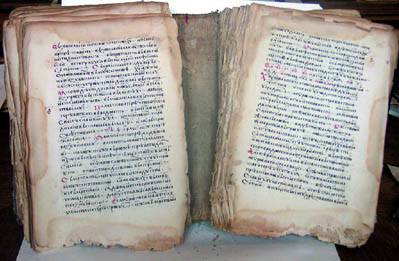
Preservation
In the ancient world, the only way of preserving information was through oral tradition, most of which was memorized. A Rabbi was actually forbidden from commenting on a verse until it had been memorized. In fact, during the time of Jesus, it was not uncommon for Rabbi’s to commit the entire Torah to memory!
A common argument among sceptics is the idea that oral tradition can not be trusted because in our modern world, stories can become quickly embellished as time goes on. On the surface this appears to be a valid point, but in actuality it is not a fair analogy. In the context of the ancient world, and in being completely honest with ourselves, we must understand that the first century apostles who passed on information about Jesus were genuinely and deeply concerned to get this information correct, because they saw it as sacred, holy tradition. This was not just about what happened at the market last week; this was concerning the Creator of the universe.
In this sense oral tradition is, by nature, ‘self-correcting’. You see, oral tradition is a ‘community’ event. That is to say, a story is passed down by individuals within that community, and if they get it wrong they have the whole community to correct them, thereby being self-correcting. These stories were passed on reliably because they were passed on by the community. In fact, scholarly studies show that ancient cultures could preserve and pass along oral tradition, through several generations, reliably and without changing or losing a thing over time!
The earliest known copies of the gospels were written on sheets of papyrus and scrolls made of animal skins. They are among the oldest known manuscripts of antiquity. In a previous Hub I touched lightly on the ‘streams-of-information’ that were used to develop various versions of the Bible. One of sources of the streams is the Codex Sinaiticus, written around AD 330 and AD 350, it contains almost all of the New Testament and a good portion of the Old. Another is the Codex Vaticanus, from the same era, is a nearly complete Greek copy of the entire Bible. There is a papyrus fragment from the 18th chapter of John that dates back to AD 125, less than a single generation after the gospel was originally written!
How do we know that what we have today, bares any resemblance of what the original said? The truth is we have better manuscript authentication for the New Testament than we have for any other ancient document. For example the Bible of the Greeks, Homer’s “Illead” is preserved in maybe 600 manuscripts, the oldest of them 1,000 years after the document was originally written. For the New Testament, we have approximately 5,000 Greek manuscripts, as well as virtually the entire New Testament preserved in the quotations of the church fathers to the first four centuries. That means that we could reconstruct the New Testament from these quotations alone! It is commonly agreed upon by both conservative and liberal that we have an incredibly reliable New Testament
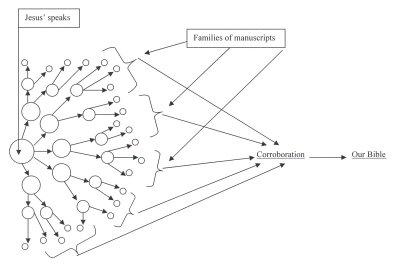
Contradictions
As one takes a closer look at the parallel stories of the gospels of Matthew, Mark and Luke, there may appear to be contradictions. For example, Matthew 8:28 tells us that there were two demoniacs in Garasene. Mark 5:2, however, speaks only of one. In light of what we now know about oral tradition, how can we get this apparent contradiction? Obviously, Mark describes only one of the two demoniacs. Perhaps the one who is most prominent, or the one who has more to add to the context of the story.
Conversely, please consider, if every single account had given us exactly the same detail, we would have more reason to suspect some form of collusion or conspiracy than we do ‘with’ the apparent contradictions. To say that they got together and discussed every single detail and what they would write would rule out independent testimony as well.
Here’s another interesting thought and maybe I’m being a little naïve, but humour me for a moment. I can understand the idea of a single person, or a group of people with the same agenda, intentionally deceiving the masses for, well, any number of reasons. However, just the vast amount of religious denominations today alone, which claim to be based on the Bible, opposes that idea. What I mean is this, if any one specific person or denomination had ‘control’, per-sae, of the Bible, then there could be a warranted suspicion of an agenda or ulterior motives. As it is today, there is no one person, group or system that stands to gain from anything we believe about this book. What gain, motive or agenda could the original Bible writers possibly have had? What profit could they gain whether or not anyone of that time (or presently) believed them? On the contrary, the things they were recording and writing were some of the most controversial topics and most would end up being martyrs for what they wrote. We could take that concept a little further by asking, if the Bible has been changed or corrupted then who stands to gain from ‘that’? Please take a moment to think about this.
Finally, concerning the apparent contradictions in the Bible - it would seem obvious that when you have multiple eyewitnesses to the same event, you are going to get different perspectives. What is more important is for the ‘core’ of the testimony to be the same and consistent, even if you get variations in the details.
I hope to touch a little on the subject of the Gnostic gospels in another Hub.
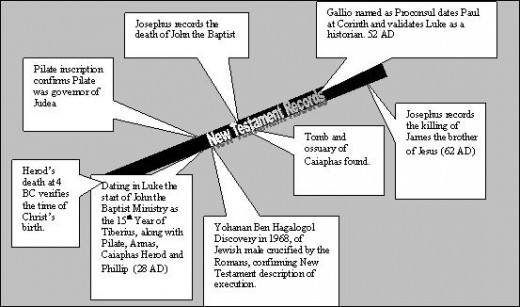
Jesus – The Man Himself
Jesus of course was not an emperor or a conqueror, yet He left an impact in His environment and created a movement that grew from there that would affect time itself. It is no wonder then, that there is a remarkable amount of non-canonical documents and corroboration. Josephus refers to Him, the roman historian Tacitus refers to Him, Suetonius the political writer refers to Him. Critics refer to Him, and it just goes out further and further from there. There is actually now more evidence, or at least as much, to support the birth, life, death and resurrection of Jesus Christ of Nazareth, than there is to support Napoleon ()
Now we may begin to understand that the reason that they were telling these things -everything from Jesus’ parables, to His healings, to His controversies, to His warnings- is not just because it was good advice for them in their own day, but that it actually mattered. It actually happened.
I hope to write more about ‘Who Jesus Really Was’ and “The Resurrection”, in another Hub.
As always, I sincerely encourage anyone who has never done it to not only investigate the evidence yourself, but to do it as a priority, and do it with an open mind, that is, to go wherever the evidence takes you, even if it makes you uncomfortable. And finally, ‘resolve’ that you will reach a verdict.
Thank-you for your interest in this subject matter. Good-luck and God bless!
This essay is a summary of the research that was done by greater men than I:
J.P Moreland, Prof. of Philosophy, Biola University
Mark Strauss, Prof. of New Testament, Bethel Seminary
Craig Blomberg, Prof. of New Testament, Denver Seminary
Craig Evans, Prof. of New Testament, Acadia Divinity College
N.T. Wright, Bishop of Durham, United Kingdom
Special thanks to Lee Strobel, writer and Christian apologist, former pastor and journalist, for making this information easily accessible.






